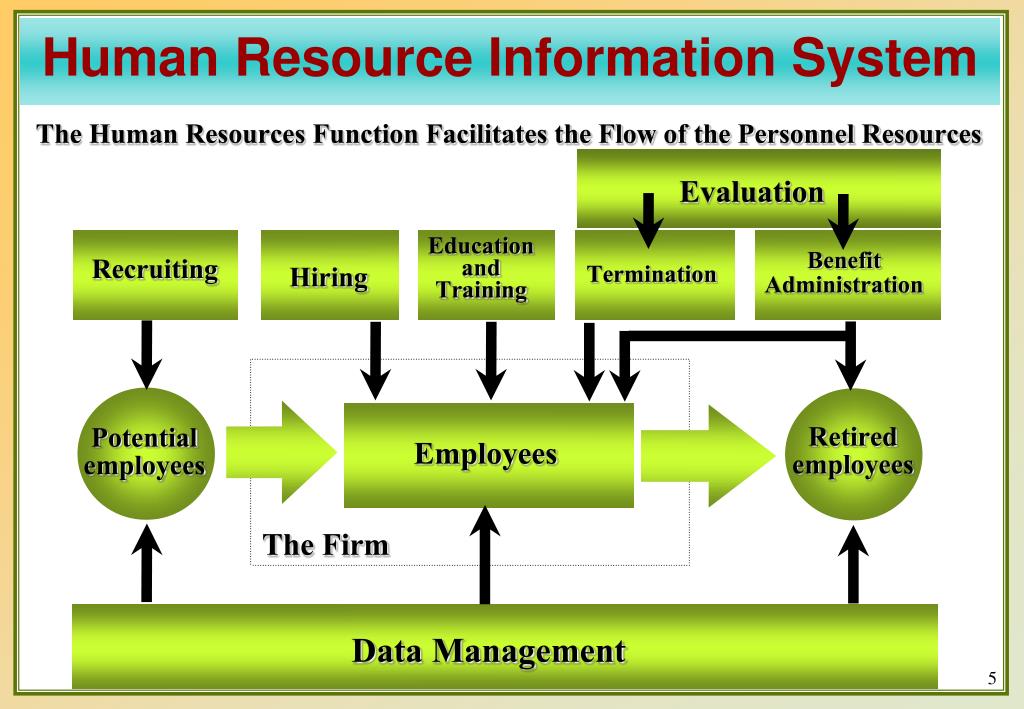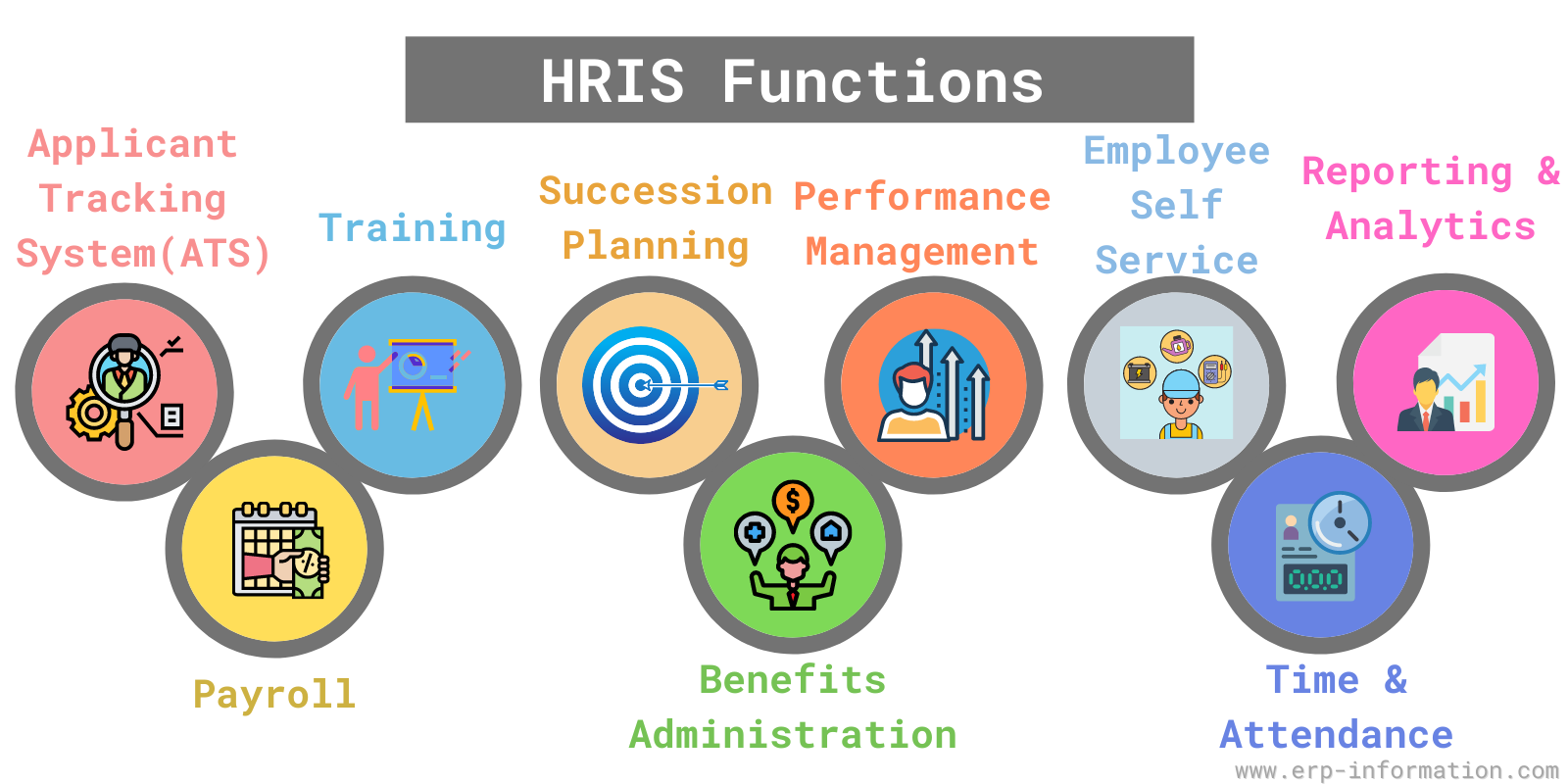The human resource information system (HRIS) has revolutionized the way HR departments operate, providing a comprehensive suite of tools to manage employee data, streamline processes, and make informed decisions. From automating payroll to tracking performance, HRIS has become an indispensable tool for modern businesses.
This system offers a range of benefits, including improved efficiency, enhanced accuracy, and better compliance. It also provides valuable insights into workforce trends and enables data-driven decision-making.
HRIS Definition and Overview
A Human Resource Information System (HRIS) is a software application that helps organizations manage and track employee data. HRIS systems can be used to automate a variety of HR tasks, such as payroll, benefits administration, and performance management.
HRIS systems offer a number of benefits to organizations, including improved efficiency, reduced costs, and better decision-making. By automating HR tasks, HRIS systems can free up HR staff to focus on more strategic initiatives. Additionally, HRIS systems can help organizations to reduce costs by streamlining processes and eliminating duplicate data entry.
Functions of a HRIS
- Payroll management
- Benefits administration
- Performance management
- Employee self-service
- Recruiting and onboarding
- Learning and development
- Compliance management
Core HRIS Modules: The Human Resource Information System
Human Resource Information Systems (HRIS) are comprehensive software solutions that automate and streamline various HR processes. These systems typically comprise several core modules that address specific HR functions. Understanding these modules is crucial for effective HRIS implementation and utilization.
Employee Management
Employee management modules provide a centralized platform for managing employee data, including personal information, contact details, job descriptions, performance reviews, and training records. These modules facilitate efficient employee onboarding, tracking of employee lifecycle events, and maintenance of accurate personnel records.
Payroll Processing
Payroll processing modules automate the calculation and distribution of employee salaries, wages, and benefits. They handle tasks such as time and attendance tracking, tax calculations, deductions, and payment processing. These modules ensure timely and accurate payroll administration, reducing the risk of errors and compliance issues.
Benefits Administration
Benefits administration modules manage employee benefits programs, including health insurance, retirement plans, paid time off, and other福利. These modules automate the enrollment, eligibility verification, and administration of benefits, simplifying the process for employees and HR professionals. They also provide tools for tracking and reporting on benefits utilization, ensuring compliance with regulatory requirements.
Advanced HRIS Features
Advanced HRIS systems offer a range of capabilities beyond core HR functions, including:
Talent Management: These features help organizations attract, develop, and retain top talent. They include:
- Recruitment and onboarding
- Performance management
- Succession planning
- Training and development
Performance Management: HRIS systems can automate and streamline performance management processes. Features include:
- Goal setting and tracking
- Performance reviews
- Compensation and benefits management
Workforce Analytics: HRIS systems provide robust reporting and analytics capabilities. They can help organizations:
- Identify trends and patterns in workforce data
- Make informed decisions about HR policies and practices
- Improve workforce planning and optimization
HRIS Implementation Considerations

The successful implementation of a HRIS is crucial for maximizing its benefits and minimizing potential risks. Several key factors need to be carefully considered to ensure a smooth and effective implementation process.
These factors include:
System Selection
Choosing the right HRIS for an organization is a critical decision that requires careful evaluation of various factors, including:
- Organizational needs:Identifying the specific HR functions and processes that the HRIS should support.
- Vendor capabilities:Assessing the functionality, reliability, and scalability of different HRIS vendors.
- Integration with existing systems:Ensuring that the HRIS can seamlessly integrate with other HR and business systems.
- Cost and budget:Considering the acquisition, implementation, and maintenance costs of the HRIS.
- Vendor support:Evaluating the vendor’s reputation, level of support, and ability to meet the organization’s ongoing needs.
Data Migration
Migrating data from existing systems to the new HRIS is a complex and critical task that requires careful planning and execution. Key considerations include:
- Data quality:Ensuring that the data to be migrated is accurate, complete, and consistent.
- Data mapping:Mapping the data from the existing systems to the new HRIS structure.
- Data conversion:Converting the data into a format compatible with the new HRIS.
- Data validation:Verifying the accuracy and completeness of the migrated data.
- Data security:Protecting the confidentiality and integrity of sensitive employee data during the migration process.
User Training
Training users on the new HRIS is essential for successful adoption and utilization. Key considerations include:
- Training needs assessment:Identifying the specific training needs of different user groups.
- Training materials:Developing comprehensive training materials that cover all aspects of the HRIS.
- Training methods:Utilizing a variety of training methods, such as instructor-led training, online learning, and on-the-job training.
- Training evaluation:Assessing the effectiveness of the training and making necessary adjustments.
- Ongoing support:Providing ongoing support to users after the initial training to ensure they can effectively utilize the HRIS.
HRIS Trends and Future Directions

The HRIS landscape is constantly evolving, with new trends and innovations emerging all the time. These trends are being driven by a number of factors, including the increasing use of cloud-based technology, the growing adoption of artificial intelligence (AI), and the increasing mobility of the workforce.
Some of the most important HRIS trends to watch for in the coming years include:
Cloud-based HRIS
Cloud-based HRIS solutions are becoming increasingly popular because they offer a number of advantages over on-premises solutions, including lower costs, greater flexibility, and easier scalability.
- Lower costs: Cloud-based HRIS solutions are typically less expensive than on-premises solutions because they do not require businesses to purchase and maintain their own hardware and software.
- Greater flexibility: Cloud-based HRIS solutions are more flexible than on-premises solutions because they can be accessed from anywhere with an internet connection.
- Easier scalability: Cloud-based HRIS solutions are easier to scale than on-premises solutions because they can be quickly and easily provisioned to meet the changing needs of a business.
Artificial Intelligence (AI) Integration
AI is rapidly becoming a major force in the HRIS landscape. AI-powered HRIS solutions can automate a variety of tasks, such as screening resumes, scheduling interviews, and providing employee training.
- Improved efficiency: AI-powered HRIS solutions can help businesses to improve their efficiency by automating a variety of tasks.
- Better decision-making: AI-powered HRIS solutions can help businesses to make better decisions by providing them with insights into their workforce data.
- Enhanced employee experience: AI-powered HRIS solutions can help businesses to improve the employee experience by providing them with personalized and self-service tools.
Mobile HRIS Applications, The human resource information system
Mobile HRIS applications are becoming increasingly popular as the workforce becomes more mobile. Mobile HRIS applications allow employees to access their HR information and services from anywhere, at any time.
The human resource information system (HRIS) is a crucial component of modern HR management, providing a centralized platform for managing employee data, payroll, and other HR-related processes. To address the growing demand for cost-effective and flexible HR solutions, many organizations are turning to open source hr management system . These systems offer a range of benefits, including customization options, lower implementation costs, and access to a community of developers for support and innovation.
By leveraging open source hr management system, organizations can enhance their HRIS capabilities while maintaining control over their data and processes.
- Increased employee engagement: Mobile HRIS applications can help businesses to increase employee engagement by providing them with easy access to their HR information and services.
- Improved productivity: Mobile HRIS applications can help businesses to improve productivity by allowing employees to access their HR information and services from anywhere, at any time.
- Reduced costs: Mobile HRIS applications can help businesses to reduce costs by eliminating the need for paper-based HR processes.
HRIS Case Studies and Best Practices

HRIS implementations have proven to be transformative for organizations seeking to enhance their HR processes and achieve strategic goals. By examining real-world case studies, we can gain valuable insights into the business outcomes achieved and best practices adopted.
These case studies showcase successful implementations across various industries, providing tangible examples of how HRIS can empower organizations to improve efficiency, drive employee engagement, and align HR strategies with business objectives.
Business Outcomes Achieved
- Increased employee productivity and efficiency through automated workflows and self-service portals.
- Improved decision-making with real-time data and analytics on workforce trends and performance.
- Enhanced employee engagement and satisfaction through personalized experiences and career development opportunities.
- Reduced compliance risks and improved regulatory adherence with integrated compliance management modules.
- Optimized HR operations and reduced costs through automation and streamlining of processes.
Best Practices Adopted
- Thorough needs assessment and stakeholder involvement to ensure alignment with organizational goals.
- Phased implementation approach to minimize disruption and allow for gradual adoption.
- Effective change management strategies to foster employee acceptance and usage.
- Regular performance monitoring and evaluation to measure progress and identify areas for improvement.
- Ongoing training and support to ensure employee proficiency and maximize HRIS utilization.
Last Point
In conclusion, the human resource information system is a powerful tool that can transform HR departments. By leveraging its capabilities, businesses can optimize their HR operations, improve employee engagement, and gain a competitive edge in today’s dynamic market.
FAQ Section
What is the primary function of a HRIS?
A HRIS is primarily responsible for managing employee data, automating HR processes, and providing insights into workforce trends.
How does a HRIS improve efficiency?
A HRIS automates many manual tasks, such as payroll processing and benefits administration, freeing up HR professionals to focus on more strategic initiatives.
What are the key modules typically included in a HRIS?
Common HRIS modules include employee management, payroll processing, benefits administration, talent management, and performance management.
 HRIS System
HRIS System
